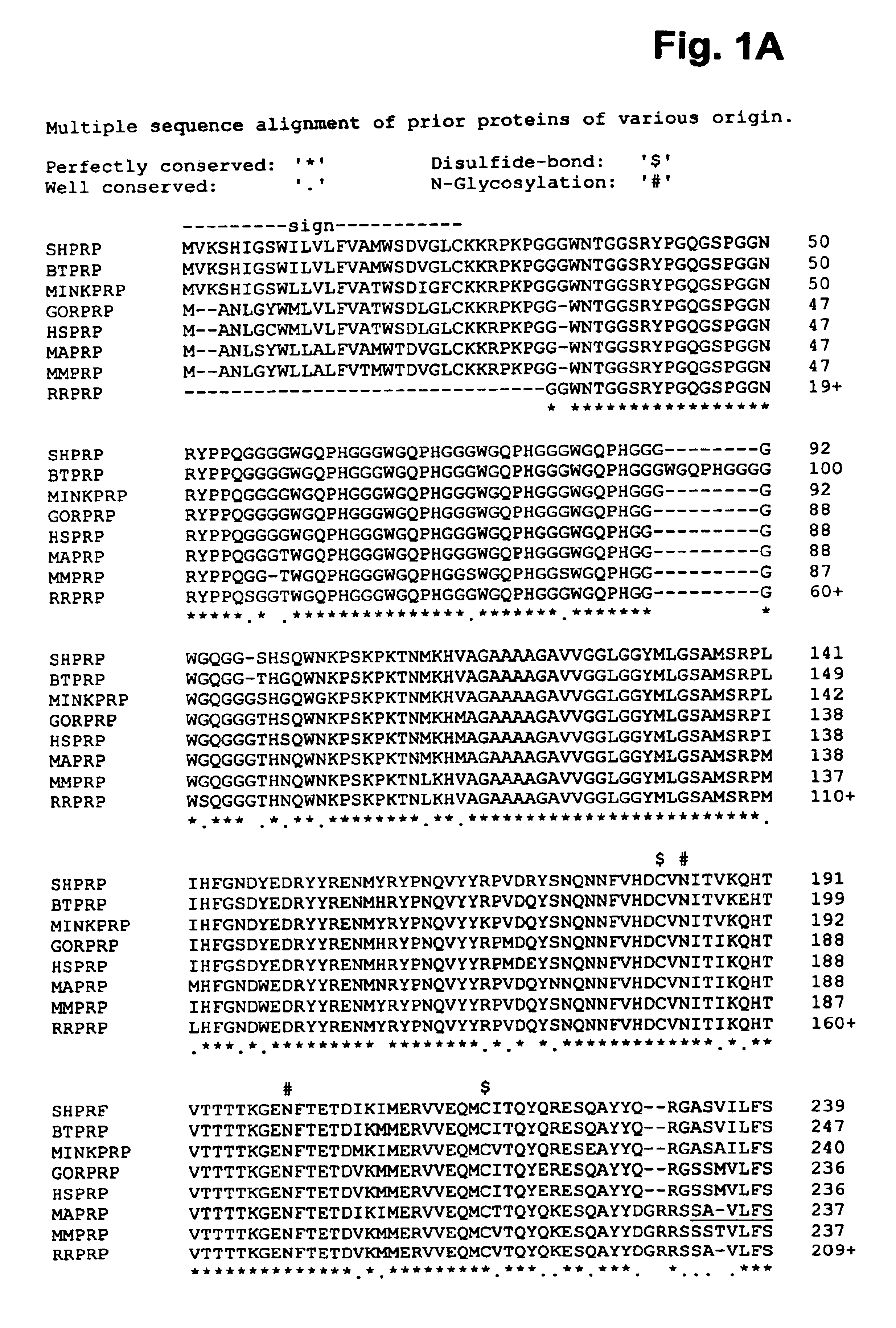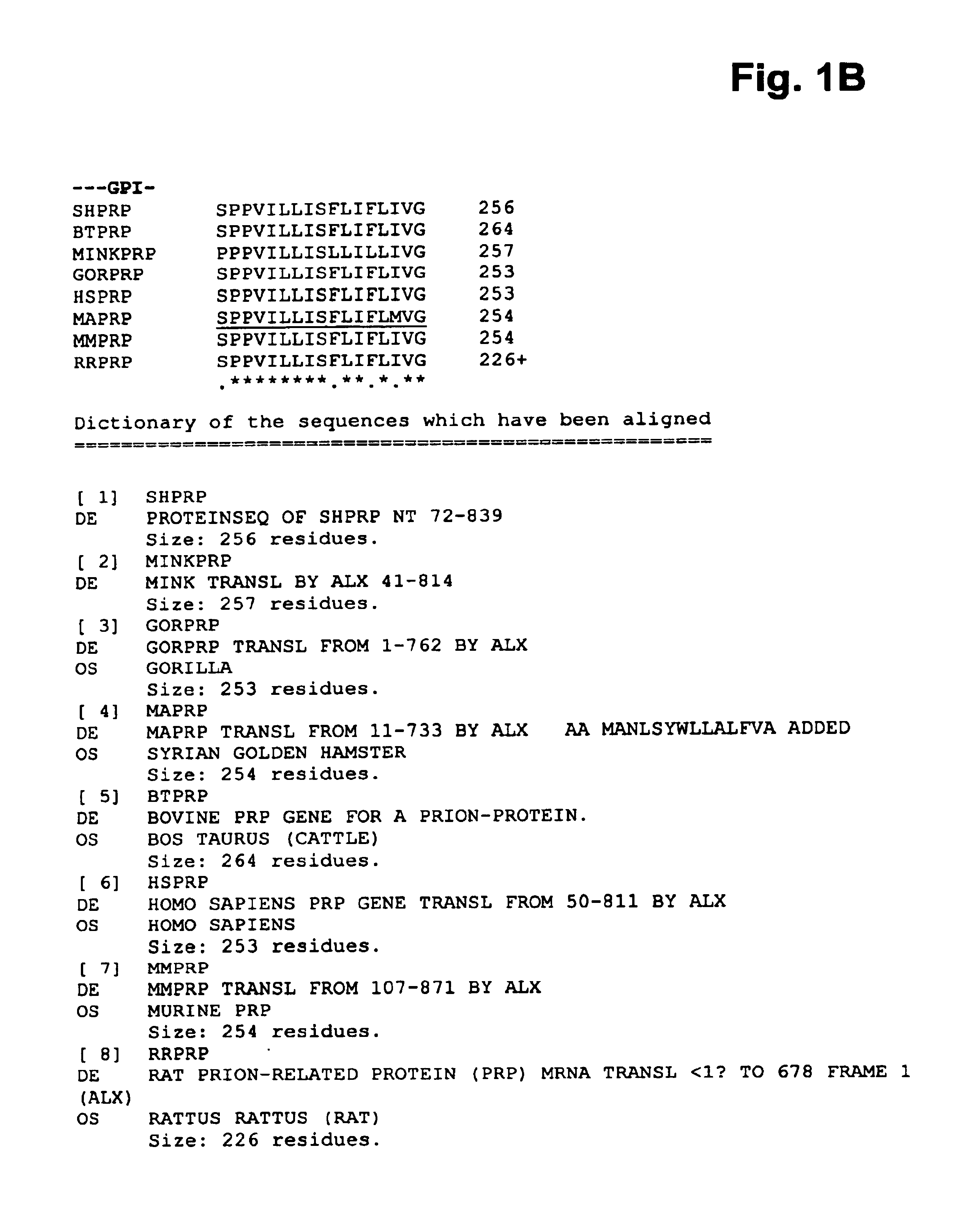Method for the detection of prion diseases
a technology for prion diseases and prion cells, applied in the field of prion diseases, can solve the problems of high protein insensitivity, health threat, and potential threat to human and animal health, and achieve the effect of reliable and fast diagnosis
- Summary
- Abstract
- Description
- Claims
- Application Information
AI Technical Summary
Benefits of technology
Problems solved by technology
Method used
Image
Examples
Embodiment Construction
lass="d_n">[0031]In our hand, immune histochemistry (IHC) using the immuno-peroxidase staining method, when used on histological sections of the brains for diagnosing clinical scrapie and BSE, proved a highly reliable and practical method for detecting PrPSc (Van Keulen et al, 1995) and less-cumbersome than Western blotting. Using the same IHC-technique and the same antisera, we examined a number of lymphoid tissues in a group of naturally affected, clinically-positive scrapie sheep (n=55) (Van Keulen et al, in press, see also the experimental part). We demonstrated the presence of PrPSc in the spleen, the retropharyngeal lymph node, mesenteric lymph node and the palatine tonsils, in all but one of the animals (98%). Of all examined lymph nodes, tonsils were found having the highest PrPSc deposition rate that could be detected per number of follicles: in all positive cases, more than 60% of the tonsil follicles stained positive and in 95% of these cases this was even more than 80%. ...
PUM
| Property | Measurement | Unit |
|---|---|---|
| Time | aaaaa | aaaaa |
| Reactivity | aaaaa | aaaaa |
Abstract
Description
Claims
Application Information
 Login to View More
Login to View More - R&D
- Intellectual Property
- Life Sciences
- Materials
- Tech Scout
- Unparalleled Data Quality
- Higher Quality Content
- 60% Fewer Hallucinations
Browse by: Latest US Patents, China's latest patents, Technical Efficacy Thesaurus, Application Domain, Technology Topic, Popular Technical Reports.
© 2025 PatSnap. All rights reserved.Legal|Privacy policy|Modern Slavery Act Transparency Statement|Sitemap|About US| Contact US: help@patsnap.com


